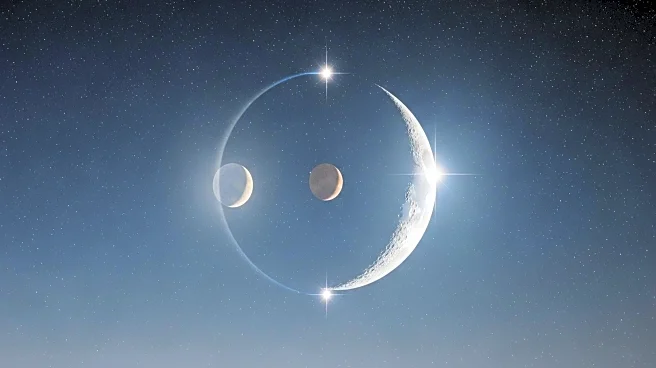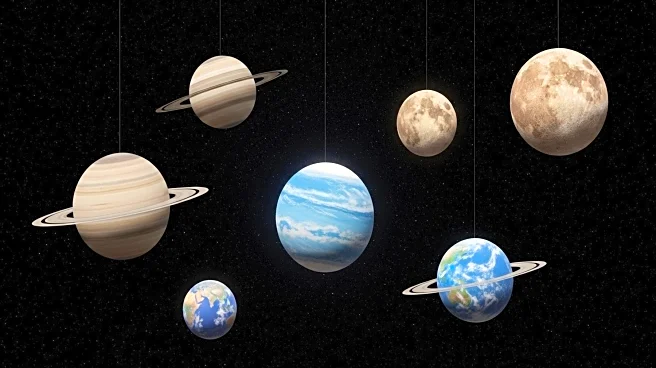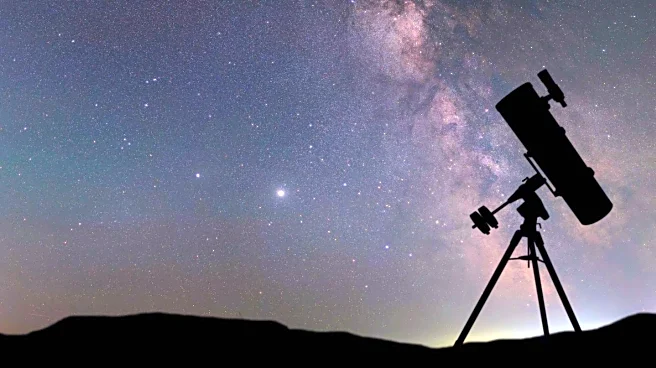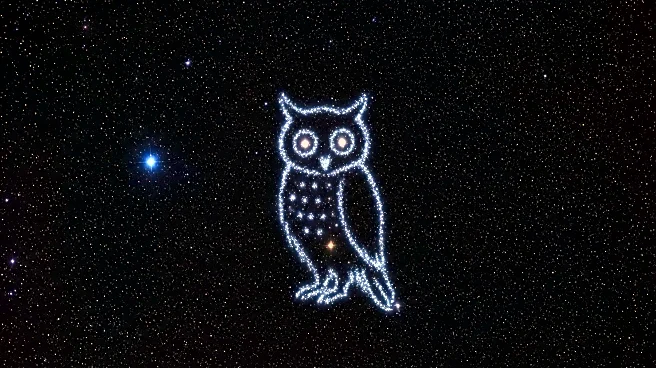What's Happening?
In a striking celestial event, Venus, the Moon, and Regulus, the brightest star in the constellation Leo, aligned in the predawn sky. This alignment, visible around 4:30 A.M. local daylight time, presented a nearly vertical line along the U.S. East Coast, with Venus positioned between the Moon and Regulus. The Moon's faster movement northeastward caused a gradual shift in their alignment. This event was optimal for viewing about an hour before dawn, offering a picturesque scene for skyscape photography. Observers in parts of Europe, Greenland, and northern Canada could witness a lunar occultation of Venus.
Why It's Important?
Such alignments provide valuable opportunities for both amateur and professional astronomers to observe and study celestial mechanics. They also serve as a reminder of the dynamic nature of our solar system and the intricate dance of celestial bodies. These events can inspire public interest in astronomy and science, encouraging educational outreach and engagement. The visibility of such phenomena without specialized equipment makes them accessible to a broad audience, fostering a shared appreciation for the wonders of the universe.











